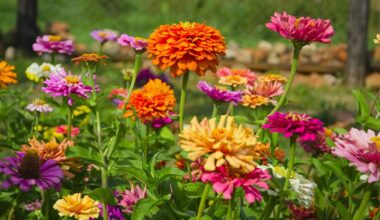Their qualities have remained the same and their maintenance remains simple. And moreover, Heuchera offer you a foliage with an incredible palette of colors: from green to purple through copper or bronze.
Their flowering gives a multitude of small flowers, which has earned these plants the nickname “despair of plants”. Heuchera adapt to all situations and are easy to grow in the ground or in pots.
It is possible to begin to grow a heuchera indoors, however, it will always be difficult to accommodate, its true nature is outside, in a bed or in a planter box, in a semi-shaded corner. Here’s how to proceed if you want to try the experiment anyway:
Contents
Planting of the heuchera in a pot
Small and undemanding, the heuchera are very well adapted to a potted crop. Choose a container that is sufficiently wide and deep, 20 to 30 centimetres deep, and at least as wide. We advise you to group several varieties of different colors or to associate them with perennials or bulbs.
- Soak the root ball in a basin filled with water for easy watering.
- Place a drainage layer of gravel, clay beads or pot shards on the bottom of the pot.
- Then lay out the substrate, ideally potting soil mixed with a little sand.
- Place the root ball, slightly burying the base of the stem, up to the point of leaf insertion. If your container is large enough, we recommend that you place the heuchera on the edge of the pot rather than in the center: their foliage will then be able to overflow to the outside, creating a more beautiful effect!
- If necessary, add a little substrate and gently pack around the plant.
- Sprinkle and place the pot in a semi-shaded room.
Caring for indoor heuchera
Very little care is needed to keep the heuchera in all its splendor. Be careful not to bring too much moisture, some species do not tolerate it well. The multiplication of heuchera is done in spring or late summer. Cut the rhizomes at their base and remove all their leaves except the last one and put them in a mixture of peat and sand.
To summarize:
- Regular watering is essential.
- Bring an organic fertilizer every three months except in periods of high heat and drought.
- To prolong the bloom think of cutting the flowers as they fade.
- After two or three years, it will be time to remove the root balls and divide them to plant them in a bed or, why not, make a new container.
How to make the heuchera last
Some varieties “tire” faster than others. At the end of 4 or 5 years, we observe that they are loosening their shoes, that the tufts are spreading apart, that they almost seem to stop growing.
It’s as if the roots are feeding the terminal bouquet poorly. In this case, there is an easy parry: dig up everything, remove the young shoots, and replant them immediately, burying them properly, flush with the first leaves. Water well.
The plants resume very easily. It is also possible that the roots may be attacked by otiorhynchus larvae, dug up, cut flush (plants on the left in the photo). Detach the healthy shoots (small plants on the right of the photo) and replant them. They will re-root without any problem.
Parasites of the indoor heuchera
The heuchera resist very well to cryptogamic diseases! However, they are more sensitive to othiorynx. These small weevils cause holes in the leaf periphery and their voracious larvae attack the roots until the plant dies. For effective control, place a cardboard box on the ground, the weevils will take refuge there and will be trapped. You can also clean the foot with application.
Summary
The breathtaking range of colors is only one of the assets of this species. The heuchera are primarily plants that thrive in mid-shade as well as in full shade. However if they are installed in the sun, they will manage to grow too!
They can be cultivated in the ground as well as in pots, never become invasive, and are even persistent to semi-persistent. And if the flowers of our grandparents’ plants were so fine that they were nicknamed “painters’ despair”, the new heucheras offer much bigger, more numerous and more visible flowers, even from a distance.









